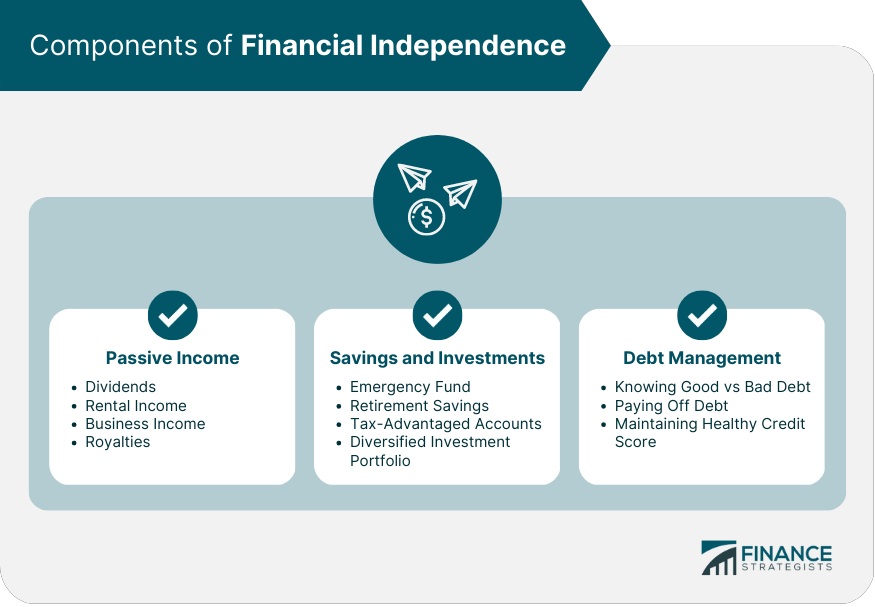
One of the most profound joys in life is sharing our homes and hearts with a beloved dog. Their unwavering loyalty, playful spirits, and unconditional love enrich our lives in countless ways. Yet, with this deep connection comes a painful truth: our furry companions’ lifespans are much shorter than ours. As they age, the thought of their final days can be incredibly daunting, often feeling like one of the worst aspects of pet ownership.
It’s a journey no pet parent wants to rush, but understanding the subtle shifts in our dogs can help us prepare and, most importantly, provide the utmost comfort in their twilight moments. While it’s rare for a dog to live for 20 years, and most don’t even reach that milestone, every dog is an individual. Bigger dogs typically live shorter periods than smaller canine companions, though there are plenty of exceptions. As your cherished friend reaches the end of their typical lifespan, you may begin to worry about when the time will come for them to move on.
This article aims to gently guide you through some of the common signs that may indicate your dog is nearing the end of their life, focusing on helping you bring them comfort during this incredibly difficult time. It’s important to remember that “no two dogs will exhibit exactly the same signs or symptoms signifying that the end is near.” Some dogs may show these clues for months or years, while others may approach the end without displaying any obvious signs. We’ll be using the terms “signs” and “symptoms” interchangeably, just as laypersons often do, to help you navigate this sensitive period with practical understanding. The most critical takeaway, however, is the imperative to “work extremely closely with your veterinarians.” They are your most valuable resource and guide.

1. **Loss of Interest**When a dog approaches the end of his lifespan, a heartbreaking but common sign is a gradual loss of interest in the world around him. This is particularly true for dogs suffering from a long-term, chronic illness. Toys that once brought boundless joy may now gather dust, and the enthusiastic greetings at the door might fade into a simple, quiet acknowledgment or even no reaction at all.
This decline in engagement is often one of the first indicators that your canine’s quality of life is beginning to decrease. It’s a profound symptom associated with your dog’s body slowing down, a natural yet incredibly difficult part of the aging process. The reasons behind this loss of interest are usually multi-faceted, reflecting a combination of physical and internal changes.
Firstly, your dog is likely to feel more tired than usual, which naturally diminishes their desire or energy for play. It may also become painful for them to move around too much, especially if they are grappling with conditions like arthritis or joint pain. Even without severe pain, many old or dying dogs experience problems with mobility, becoming extra-cautious on slippery floors or having trouble judging distance. These combined factors often make it much easier and more comfortable for your dog to simply lay around all day, rather than participating in their once-favorite pastimes.
Read more about: Beyond the Limelight: How 14 Celebrity Moguls Master Private Equity and Hedge Funds
2. **Loss of Coordination**As dogs reach the end of their lives, it is very common for them to experience a noticeable loss of coordination. Their muscle strength may not be what it once was, directly impacting their balance and making once-simple movements challenging. You might notice them stumbling more, struggling with stairs, or simply being less steady on their paws than before.
Beyond muscle weakness, their ability to judge distance might decline, and they could suffer from less-than-stellar eyesight. These sensory and physical changes can collectively make them much clumsier than usual. What once was a confident stride can become a hesitant shuffle, causing concern for any loving pet parent observing these changes.
It’s important to remember that “countless disorders can also cause a loss of coordination, including dehydration.” If your pooch is experiencing gastrointestinal symptoms alongside a loss of coordination, it could simply be a sign of dehydration. However, the development of more than one of these symptoms together is particularly worrying and warrants immediate veterinary attention to understand the underlying cause and ensure your dog’s comfort.
Read more about: Mastering Midlife Fitness: The Essential Exercises Men Over 50 Need to Stay Strong, Mobile, and Injury-Free

3. **Depression**Dogs nearing the end of their lives will frequently exhibit many symptoms akin to depression. This doesn’t necessarily mean your dog consciously knows they are dying; rather, it’s more likely a direct result of simply not feeling well. Just like humans, when our bodies are failing us, our mental and emotional states are deeply affected, leading to feelings of malaise and withdrawal.
Their behavior might change dramatically. For example, your dog may “stop doing things he once loved,” cease responding to your attention, or become noticeably withdrawn from family interactions. You might also observe changes in his sleeping patterns, either sleeping excessively or becoming restless, and a pronounced loss of interest in activities like walks or trips to the park that once brought immense joy.
While dog depression is often treatable in other circumstances, it can be particularly challenging to address as your dog approaches the end of their life. Medications are sometimes used for depressed dogs, but an elderly dog, or one with failing health, may not respond well to them. It is crucial to have an open and honest conversation with your vet about all your available options to ensure your dog’s comfort and well-being.
Read more about: Forge a Powerful Chest: Top 12 Trainer-Approved Exercises for Men Over 40 to Build Size and Strength
4. **Odd Breathing**When a canine is very close to death, their normal bodily functions, including the respiratory system, may begin to break down. This can lead to them breathing in a distinctively odd manner, which can be quite alarming to witness. This phenomenon is not exclusive to dogs; humans nearing the end of life often exhibit similar irregular breathing patterns.
Your dog’s breathing may become either very slow or very fast, or it might fluctuate, being normal for a period before becoming labored, then returning to normal again. You might also notice that they simply have to work much harder to move air in and out, their chest heaving with effort. These irregular patterns are a clear indicator that their body is struggling to maintain essential functions.
If your dog begins having trouble breathing, it is absolutely essential to call your vet right away if you have not already done so. “This can be a sign of illness that is treatable with the right care.” While it is often one of the last signs to develop when a dog is dying, it can also unfortunately go on for quite some time before your dog finally passes, making professional guidance invaluable for managing their comfort.
Read more about: Unlock Home Harmony on a Budget: 14 Brilliant Dollar Store Organization Hacks Expert-Approved

5. **Incontinence**Incontinence, or the loss of bladder and sometimes bowel control, is a common issue as dogs age. Because of this, its presence by itself isn’t necessarily a definitive sign that your dog is about to die. For many, it’s simply a normal, albeit inconvenient, part of their aging process, much like it can be for elderly humans.
However, the context of incontinence is critical. If it develops quickly and is accompanied by other symptoms from this list, it could indeed be a more serious sign that your dog’s body is beginning its final shutdown. In such cases, it points to a systemic decline rather than an isolated age-related issue. Yet, if your dog is having accidents but otherwise remains energetic, playful, and happy, they are likely not near the end of their life.
Regardless of the context, “we highly recommend taking your pet to the vet if he has lost control of his bladder.” Incontinence can be a symptom of many different health problems, many of which are treatable. It’s also vital to “continue providing plenty of fresh drinking water, unless otherwise instructed by your vet,” to prevent dehydration, which can compound other health issues.
Read more about: The 14 Most Shocking & Inspiring Health Secrets of Top Olympic Athletes You Won’t Believe!
6. **Extreme Lethargy**Extreme lethargy is a profound lack of energy and enthusiasm that can signal significant changes in your dog’s health. In many ways, it can appear similar to depression, and in fact, the two can occur simultaneously. However, some dogs will experience profound lethargy without necessarily exhibiting other signs of depression, making it a distinct symptom to observe. Essentially, dogs near the end of life rarely move around much.
Your pet may drastically reduce the amount they play, often spending the majority of their time lying around, conserving what little energy they have. They might refuse to go on walks altogether, even if they were once their favorite activity, or completely ignore your invitations to play or engage. This isn’t laziness; it’s a deep-seated weariness that their body can no longer fight.
Of course, lethargy is a common symptom anytime your pet is feeling under the weather, so it could simply mean they are sick with something treatable. However, “unexplained lethargy or lethargy that is paired with advanced age and other symptoms can be a sign that your pooch is dying.” It’s the combination and persistence of these signs that provide the most telling information, emphasizing the need for veterinary assessment.
Read more about: Beyond the Grind: 15 Proven Tricks Long-Haul Truckers Use to Master Alertness and Focus on the Road

7. **Appetite Changes**Dogs who are approaching the end of their life often experience significant changes in their appetite. It’s not uncommon for them to drastically reduce their food intake or even stop eating altogether, which is a common factor leading to intense weight loss. Much like humans, dogs tend to lose their appetite when they don’t feel well, as their bodies become too focused on internal struggles to process food normally.
If your dog is also experiencing gastrointestinal problems, their appetites may further decrease simply because they feel nauseous or unwell. Eating can become an unpleasant experience, leading to aversion. Observing these changes, especially a complete refusal of favorite foods, can be a clear indicator of declining health.
However, it’s important to remember that “a loss of appetite isn’t always a sign of death in dogs.” Almost all diseases—and even simple stress—can cause alterations in appetite. Therefore, it’s the unexplained appetite changes that are most concerning and what we’re particularly focusing on here. You might also notice changes in how often your dog is drinking water, which can be another subtle but significant clue.
Read more about: America’s Elite Fairways: A Comprehensive Guide to Top U.S. Golf Courses with Sky-High Green Fees

8. **Gastrointestinal Symptoms**While perhaps a bit rarer than some of the other symptoms we’ve mentioned, some dogs do develop stomach problems as they reach the end of their life. These can manifest as vomiting and diarrhea, or simply a persistent feeling of nausea. Observing these issues can be particularly distressing for pet parents, as they add another layer of discomfort to an already challenging time.
These intestinal health issues can arise for a few different reasons as a dog’s body begins to shut down. Firstly, as your dog nears the end of their life, “his digestion may not work as well as it used to,” making vomiting and diarrhea more common. Their entire system becomes less efficient. Secondly, their appetite might also be severely disrupted, which can both cause and stem from nausea, creating a vicious cycle of discomfort.
Read more about: Beyond the Bite: 12 Healthy Foods That Turn Harmful When You Eat Too Much
Given the myriad causes for gastrointestinal upset—ranging from treatable illnesses to the advanced stages of decline—”we really recommend speaking with your vet if you notice any of these symptoms.” Furthermore, it is crucially important to “keep your dog hydrated if he’s beginning to experience gastrointestinal symptoms.” Diarrhea, especially severe forms, can quickly lead to dehydration, and conversely, constipation can also result from a lack of sufficient fluids, compounding their distress. Your vet can advise on the best course of action to alleviate these symptoms and ensure hydration.







